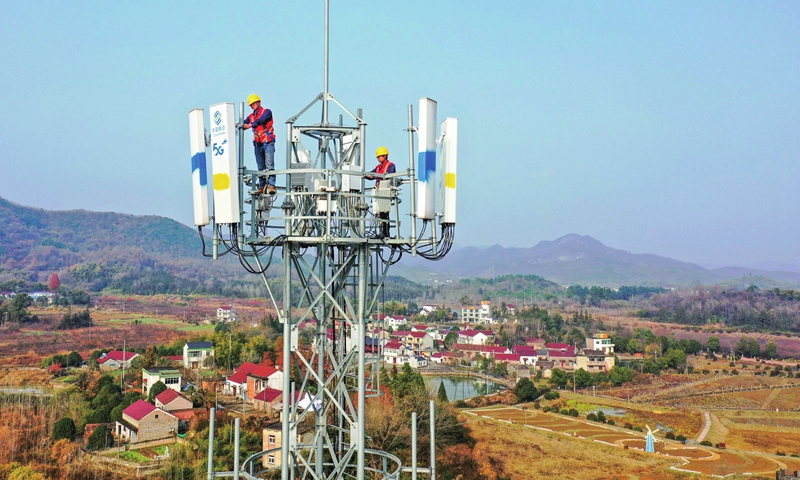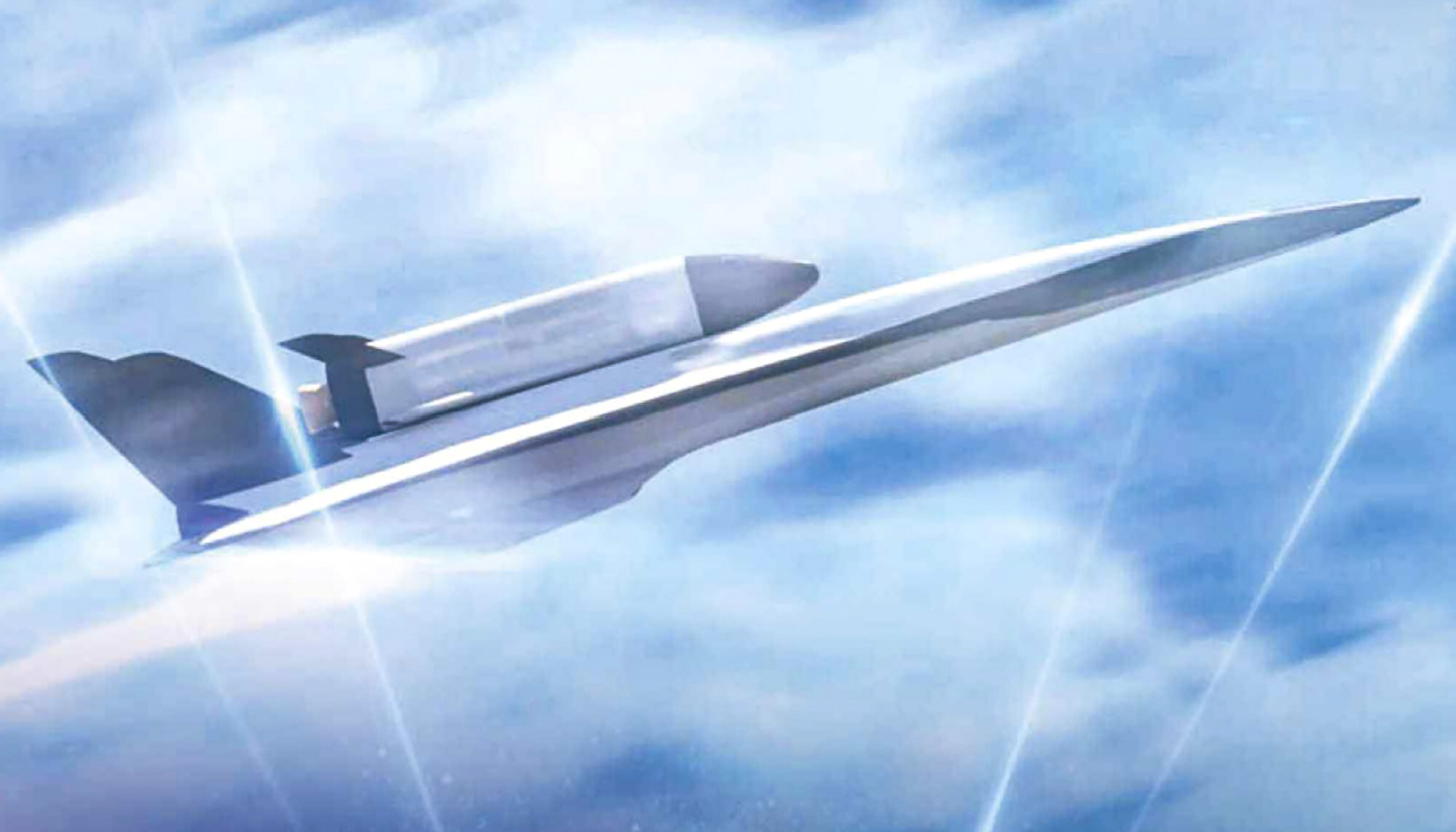Yeah more like a nano Stereolithography 3D Printer.I was thinking in relation to the mask, like what FairAndUnbiased mentioned.
Also in the article, you posted.
"In addition, the research also used femtosecond laser superdiffraction nanolithography to construct a variety of photonics microdevices and biomimetic microstructures based on inorganic nanostructures. The related research results were published in Nature Communications under the title of λ/30 Inorganic Features Achieved by Multi-Photon 3D Lithography . "
Admittedly, it's quite a different kind of lithography.
You are using an out of date browser. It may not display this or other websites correctly.
You should upgrade or use an alternative browser.
You should upgrade or use an alternative browser.
News on China's scientific and technological development.
- Thread starter Quickie
- Start date
AssassinsMace
Lieutenant General
China should build a ring of these twelve miles out from their made made islands in the South China Sea.
Dude check out katago, on single rtx3080 its already superhuman at any time intervalStandard chess engine like Stockfish can easily overcome high ranking players. Can standard Go engine do that? Or is it still limited to sophisticated engine like AlphaGo?
Run katago 40 block network on a couple aws instances with like 4x V100 gpu and its already stronger than AlphaGo Master and AlphaZero
He might have rented some beefy cloud GPU and using opensource katago to get hints, heck even running it locally on phone is already 9dan level... check out a free Go app called AQ
China should build a ring of these twelve miles out from their made made islands in the South China Sea.
china is unlikely to breed salmon but there's something better coming
supercat
Colonel
After UAE, it's Kuwait and Saudi Arabia's turn to sign MoU with Huawei. It seems that the U.S. is really losing its grip on the Middle East. Notice the mentioning of 5.5 G.
Zain Group signs MoU with Huawei to accelerate 5.5G innovation and enhance the customer experience
Zain Group is a leading ICT service provider in the Middle East and Africa region launching commercial 5G services in 2019 in Kuwait and Saudi Arabia and has since experienced rapid growth of 5G uptake. For example, Zain Kuwait’s 5G data traffic already accounts for 46% of its total wireless traffic, and it is likely to become the first mobile operator in the MEA region that has more active 5G traffic than 4G. Zain Saudi Arabia launched the largest 5G network in the region now covering 51 cities.
Nations scramble to take a lead in 6G technology
By Published: Mar 23, 2022 08:34 PM

A concept photo of 6G technology Illustration: VCG
As 6G, the next-generation communication technology, is widely expected to achieve commercialization around 2030, various nations are ramping up research and development efforts, despite the absence of clear technical routes or unified international standards.
The next three to five years will be crucial for seizing the high ground in the field and cultivating an industrial foundation, experts said, as they called for close cooperation with international standards agencies and platforms, embracing openness and win-win partnerships.
Amid the ongoing Global 6G Conference, which is being held online from Tuesday to Thursday, more than 100 communication technology experts from China and abroad are discussing the development and vision of 6G, focusing on possible network architecture, wireless transmission routes and other issues.
The revolutionary technology, expected to be 10-100 times faster than 5G in terms of data transmission speed, will integrate with advanced computing, big data, artificial intelligence (AI) and blockchain, set to make up for desired applications that fall short of expectations in the 5G era.
Among the nations that are preparing for 6G, China is taking a leading position based on the huge investment and technological reserves of its mobile operators and equipment makers, industry watchers said.

During its earnings briefing earlier this month, China Unicom executives said that the company attaches great importance to network upgrading and evolution, while carries out tracking and research on 5G-A and 6G technologies.
For equipment providers, Chinese technology giant Huawei began R&D on 6G as early as 2019. In 2020, Huawei joined hands with China Unicom and Galaxy Aerospace for an air-space-ground integration strategic partnership agreement to jointly develop 6G.
"Enterprises are accelerating their forward-looking stances on 6G, but now it is not time for them to disclose their innovational achievements, which are at the initial stage," Ma Jihua, a veteran tech industry analyst, told the Global Times on Wednesday.
"There is not yet a clear technology route and different countries are mainly focused on pushing ahead with their R&D," Ma said, noting that China aims to have a major standard-setting role in the 6G era.
In January, a high-tech lab in Nanjing, capital of East China's Jiangsu Province, announced a major achievement related to 6G-oriented terahertz 100/200Gbps (gigabits per second) real-time wireless communication, which led to the world's fastest real-time transmission for terahertz real-time wireless communication that's been publicly reported.
2022/1/12 22:12:04

The achievement has a wide range of prospective applications. It can be installed in satellites, unmanned aerial vehicles and space ships, which can be applied to high-speed wireless communication scenarios between satellite clusters, between the sky and Earth, and between satellites over distances of more than 1,000 kilometers.
Chih-Lin I, chief scientist of China Mobile Research Institute (CMRI), said at the conference that the next three to five years will offer a "window" for 6G technologies, and this period will be key to seizing the technological heights.
She suggested that China should maintain its influence accumulated in international standards organizations in the 3G-5G eras, enhance cooperation with relevant international standards organizations and platforms, and fully promote 6G in the direction of global unified standards and ecology.
"The world is likely to agree on 6G standards around 2028, and from 2020-2025, China will likely focus on proposing 6G standards as well as research of related technologies," Xiang Ligang, director-general of the Beijing-based Information Consumption Alliance, told the Global Times.
"The country will not lag in 6G development at any stage, whether in technical research or infrastructure construction," he added.
The international organization that's involved with telecom technologies - 3GPP - is expected to initiate R&D of 6G international technical standards around 2025 before the expected commercialization around 2030, according to a white paper issued last year by the IMT-2030 (6G) Promotion Group, under the guidance of the Ministry of Industry and Information Technology (MIIT).
China, the world's biggest internet and smartphone market, granted 5G licenses for commercial use and started 6G R&D in 2019. It has built the largest 5G mobile infrastructure in the industry, with 1.43 million 5G base stations rolled out as of the end of 2021, accounting for over 60 percent of the global total.

Network maintenance staffers at the local subsidiary of China Mobile in Tongling, East China's Anhui Province test antennas for 5G base stations on December 13, 2021. As of early December, the Tongling subsidiary had built over 650 5G stations, enabling full coverage in Tongling's rural hot spots. Photo: cnsphoto
MIIT head Xiao Yaqing has vowed to strengthen international telecom cooperation in 5G R&D and applications, and to create a globally coordinated industrial ecosystem for there to be a safe, open and more mutually trusting environment.
China will take part in global efforts to push for common standards and the maturity of new technologies, Xiao told a press conference in February, noting that many Chinese companies including Huawei and ZTE have joined up with other industry peers including Nokia and Ericsson.
china is unlikely to breed salmon but there's something better coming
China has been breeding salmon in fish farms since 2018.
- Veteran hypersonic weapons adviser leads research on an artificial intelligence system that trains itself to better analyse wind tunnel experiments
- In China, as hypersonic research advances to Mach 8 and above, the amount of experimental data to be processed and analysed has risen significantly, says team
Published: 11:00pm, 23 Mar, 2022
Updated: 12:16am, 24 Mar, 2022
Le has advised the Chinese military on hypersonic weapon technology for more than three decades, according to openly available information.
Le and his colleagues said the human brain could no longer keep up with the rapid pace of hypersonic technology development.
As more countries join the race for hypersonic flight at five times the speed of sound or faster, experiments to simulate the extreme flight conditions are being carried out in many wind tunnels around the world.
Each experiment produces tens of thousands images per second. These photos must be manually scrutinised by experienced researchers, often pixel by pixel, for clues to solve theoretical or engineering problems.
In China, as the focus of hypersonic research advanced to Mach 8 and above in recent years, the amount of experimental data to be processed and analysed rose significantly, the researchers involved in these projects said.
While AI was good at handling data, there was a catch in its application to hypersonic research, Le’s team said.
Most AI systems need to be coached by humans. In a typical training session, for instance, the researchers must carefully outline a shock wave, label it with information and then correct the AI if it makes a mistake in practice.

Artist’s impression of a Chinese hypersonic plane for space transportation. Photo: Aerospace China
But the aerodynamics at hypersonic speed were so complex, and the experienced scientists so busy, it was “difficult to provide a large amount of training for deep learning models”, Le said in the paper.
The AI system they developed required no training.
The machine would label what it believed was a shock wave by evaluating the location, brightness and colour of each pixel.
The technique, known as unsupervised segmentation, is based on a mathematical theory on graphics that can establish a relationship between seemingly unrelated objects.
The AI would use these initial results as training material to improve its performance on shock wave recognition continuously until it could detect the shock wave patterns.
In a wind tunnel experiment, the shock waves identified by the AI were an 85 per cent match to those marked by human experts, according to the researchers.
Its overall accuracy was nearly four times that of traditional computer software.
An image of a hypersonic wind tunnel test contains a large amount of turbulence, and it can take human experts “an enormous amount of time and energy to label the critical shock wave structures pixel by pixel”, said Le and colleagues in the paper.
The AI, based on a low-cost, three-year-old graphic card, took about 9 seconds to process an image.
This knowledge would allow the AI to predict the occurrence of shock waves and come up with hypersonic weapons designs to better control air flow, the researchers said.
China plans to extend hypersonic flight technology from military to civilian sectors.
An official goal by 2035 is to build a hypersonic plane that can carry passengers to anywhere in the world in an hour or two.
The plan was considered too challenging by some aviation experts because no commercial airlines operating today can fly faster than the speed of sound.
Some Chinese scientists believe AI can help overcome some of these challenges.
One technology developed by PLA researchers last year, for instance, would allow a hypersonic aircraft to write new software by itself after launch for more precise flight control.
This knowledge would allow the AI to predict the occurrence of shock waves and come up with new hypersonic weapons designs with improved ability to control the air flow, said the researchers.
China plans to expand the application of hypersonic flight technology from military to civilian sectors.
An official goal is to build a hypersonic plane that can carry passengers to anywhere in the world in an hour or two by 2035.
The plan was considered too challenging by some aviation experts because no commercial airlines in operation today can fly faster than the speed of sound.
Some Chinese scientists believed that AI could help overcome some of these challenges.
One technology developed by PLA researchers last year, for instance, would allow a hypersonic aircraft to write new software by itself after launch for more precise flight control.
We always talk about NEVs, jet engines, ship engines, gas turbines, that China may have comparable to the West. But what about the good old automobile ICE engine?
Introduced in 2012, Changan Automobile's Blue Core engine and powertrain was the core of Changan's autos for the next ten years and even today. The core is a 1.5 liter DOHC multivalve variable timing four cylinder engine with direct fuel injection. In 2021, the engine set a Guiness Book of Records running 259 hours above 5500 RPM. This is not to be confused with Yamaha's Blue Core engine introduced in 2015.


Introduced in 2012, Changan Automobile's Blue Core engine and powertrain was the core of Changan's autos for the next ten years and even today. The core is a 1.5 liter DOHC multivalve variable timing four cylinder engine with direct fuel injection. In 2021, the engine set a Guiness Book of Records running 259 hours above 5500 RPM. This is not to be confused with Yamaha's Blue Core engine introduced in 2015.


Is it indigenous or with west/ japan parts?We always talk about NEVs, jet engines, ship engines, gas turbines, that China may have comparable to the West. But what about the good old automobile ICE engine?
Introduced in 2012, Changan Automobile's Blue Core engine and powertrain was the core of Changan's autos for the next ten years and even today. The core is a 1.5 liter DOHC multivalve variable timing four cylinder engine with direct fuel injection. In 2021, the engine set a Guiness Book of Records running 259 hours above 5500 RPM. This is not to be confused with Yamaha's Blue Core engine introduced in 2015.
View attachment 85849View attachment 85850
